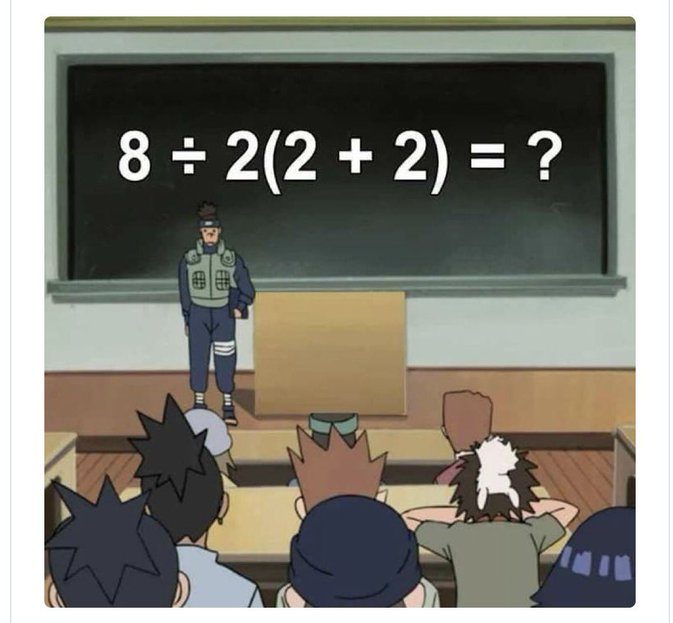Get ready, we have the most controversial math problem for you to test out against your friends. At first glance, it doesn’t seem like a very complex equation. However, the results that people have been getting have varied so greatly, it’s got all of Twitter in an uproar. Who knew a fun little test would lead to this kind of social media chaos? Let’s see what this math problem is all about, shall we?
Now, when we first look at this image, we might not think the answer could be anything other than simple. But that’s the trick! We think it’s simple, so we ignore the little details. If remember way back in grade school, we actually learned about this kind of math! See those parentheses? Those mean something important. Before we start with the correct answer, or how to find it with this math problem, let’s take a look at what answer you got so far. So, what did you get? Be sure to write it down!
Now, let’s move on to what others have said they got for the answer to this seemingly simple math problem. The main argument is between those who have the answer 1, and those who have the answer 16. Did you get one of those, I sure hope so! Let’s take a look at how either, or both, of these answers, might be correct. If we think back to our younger days when we were in school learning about equations, we might remember something called PEMDAS (BEDMAS or BODMAS in some places). PEMDAS is the order of operations for any math problem.
“The order of operations is a rule that tells the correct sequence of steps for evaluating a math expression. We can remember the order using PEMDAS: Parentheses, Exponents, Multiplication and Division (from left to right), Addition and Subtraction (from left to right).”
Khan Academy

How to Solve the Math Problem
If we follow the order of operations, we would do the math problem in this order: first, what is in the parenthesis, 2+2. So, we have 4. Next, and this is where it gets tricky, we would either immediately take that 4 (because it is in a parenthesis still) and multiply it with the 2 next to it, bringing us to an 8. Or, we would leave the 4 where it is, and continue with the math problem in the left-to-right order.
The results of which order we follow will give us either a 1 or a 16. If we take the first method, and we have our 4 in the parenthesis, we would multiply it with the 2 next to it, giving us an 8, and we would then be left with one simple math problem, 8÷8 = 1. Alternatively, if we complete the math problem in the parenthesis and then carry on from left to right, we would see 8÷2 = 4 and then multiply the 4 with the 4 in parenthesis and get 16.
Twitter user @bigbrxthr gave some advice on how they perceive the math problem, and it makes sense to us, what do you think?
“I think it’s 1 if you use distributive property a(b+c) = ab+ac in this case, 2(2+2) = 2*2+2*2 so 8/8 =1 but it’s 16 of you do what’s inside the parenthesis then do order of operations from left to right (bedmas where im from) 8/2 (4) 4*4 =16 so maybe it’s ambiguous? idek-“
Twitter
If you like challenging your brain, then you should check out these other mind-benders, we even have another math problem you may love solving!
Keep Reading: What Is The Answer To This Puzzling Math Equation?

